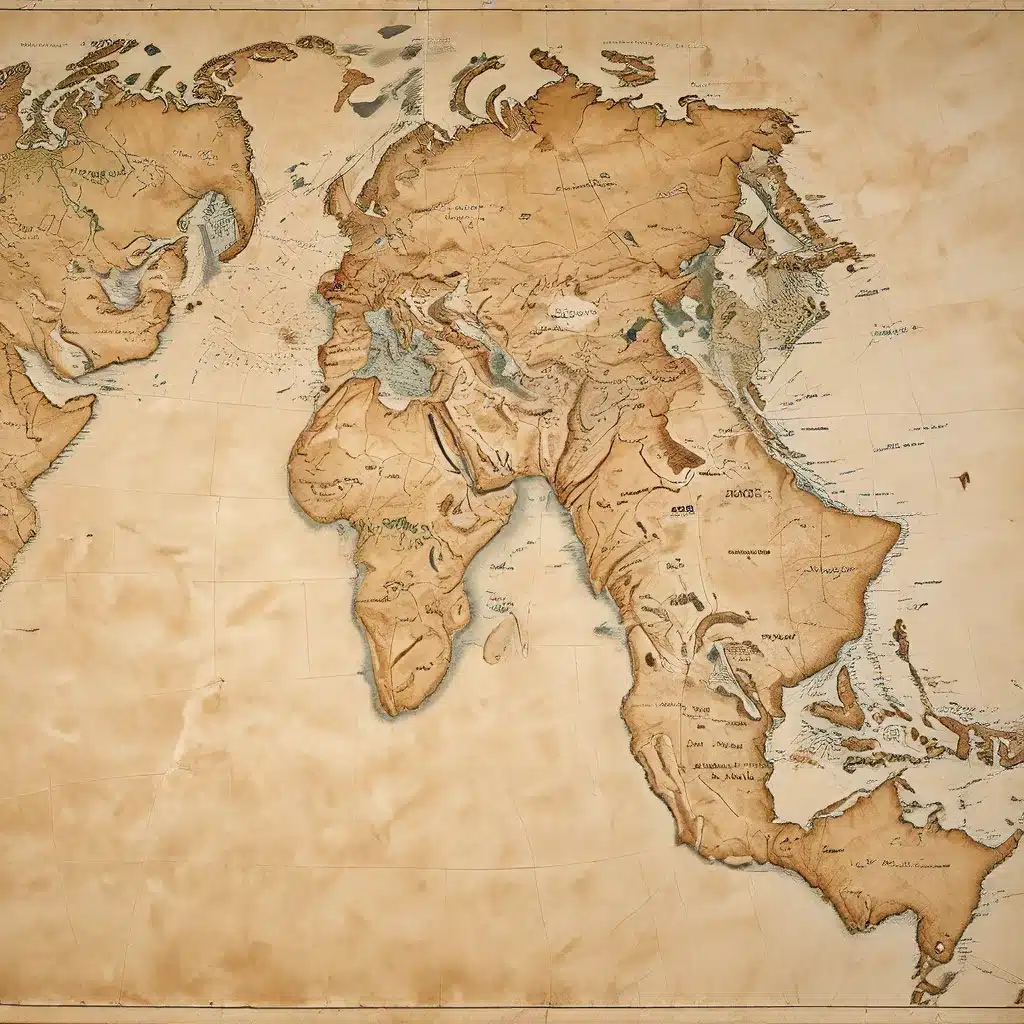
Uncovering the Forgotten Pathways of the Ancient World
Across the vast expanse of the Arabian Peninsula, a network of ancient trade routes once bustled with the movement of precious goods, ideas, and cultures. These Roads of Arabia connected civilizations, facilitated the exchange of invaluable commodities, and shaped the course of human history in ways we are only now beginning to fully understand.
Unveiling the Treasures of Arabia
Recent archaeological excavations in Saudi Arabia have unearthed a trove of remarkable artifacts that have fundamentally transformed our understanding of the pre-modern world. These discoveries, showcased in the groundbreaking exhibition “Roads of Arabia: Archaeology and History of the Kingdom of Saudi Arabia,” have shed new light on the integral role the Arabian Peninsula played in the interconnected cultures of the ancient Mesopotamian, Greco-Roman, and Islamic worlds.
The exhibition, organized by the Smithsonian Institution in collaboration with the Saudi Commission for Tourism and Antiquities, presents over 200 objects that have rarely, if ever, been seen outside of Saudi Arabia. These remarkable finds include prehistoric stelae, colossal sculptures of Lihyanite kings, exquisite gold jewelry and luxurious objects, as well as elegant calligraphic works.
Tracing the Threads of Ancient Trade
The exhibition’s four-part narrative traces the evolution of these ancient trade routes, revealing the profound impact they had on the region’s development. Beginning with the earliest inhabitants of the Arabian Peninsula, the exhibition showcases pre-historic tools and figures sculpted by some of the region’s earliest inhabitants, providing a glimpse into the lives and artistic expressions of these enigmatic cultures.
The domestication of the camel as early as 1200 BCE marked a pivotal moment, enabling the navigation of the harsh Arabian desert and the establishment of the renowned incense trade routes. These routes facilitated the exchange of precious commodities, such as frankincense and myrrh, from the Horn of Africa and the southern shores of the Arabian Peninsula to the temples and royal courts of the Mediterranean and the Near East.
As these trade networks flourished, oases that had once served as rest and recuperation points evolved into thriving commercial hubs, where civilizations interacted and exchanged ideas. The exhibition showcases objects that attest to the vital and complex relationships between the Arabs and their neighbors, including the Egyptians, Syrians, Babylonians, and Greco-Romans.
The Rise of Islam and the Kingdom of Saudi Arabia
The third section of the exhibition explores the evolution of these ancient trade routes into trails that connected cities such as Damascus, Cairo, and Baghdad to Mecca, the heart of the Islamic religion. Evocative historical tombstones with inscriptions from the now-destroyed al-Malat cemetery provide a poignant glimpse into the lives and faith of the Muslims who either lived in Mecca or made the pilgrimage to the holy city.
The exhibition also features the original gilded silver doors that once graced the entrance to the Kaaba, Islam’s most sacred sanctuary. This remarkable artifact serves as a tangible connection to the rich history and enduring significance of Mecca in the Islamic faith.
The final section of the exhibition explores the creation of the Kingdom of Saudi Arabia in 1932 and the emergence of its modern society. Visitors can explore royal possessions, historical photographs, travel books, and luxurious objects that offer a glimpse into the kingdom’s vibrant and evolving identity.
Experiencing the Roads of Arabia
The “Roads of Arabia” exhibition is a remarkable and eye-opening experience that challenges visitors to rethink their understanding of ancient history. Through interactive stations, visitors can piece together a ceramic puzzle, experience the aromas of the trade routes through a scent station, and explore the translation of English names to Arabic on a touchscreen.
These immersive elements, combined with the stunning prehistoric stelae, colossal sculptures, and exquisite artworks, create a truly memorable and transformative experience. As Julián Zugazagoitia, the Menefee D. and Mary Louise Blackwell Director & CEO of the Nelson-Atkins Museum of Art, noted, “Even archaeologists and specialists in ancient and Middle-Eastern art have been surprised by the discoveries that have been made in Arabia in recent decades. These objects and this exhibition have changed the way we think about ancient and world history.”
The “Roads of Arabia” exhibition is a testament to the incredible power of archaeology to uncover the hidden stories of the past and redefine our understanding of the interconnectedness of ancient civilizations. By piecing together the puzzle of these prehistoric trade routes, we gain a deeper appreciation for the rich cultural heritage of the Arabian Peninsula and its enduring influence on the course of human history.
As you plan your next visit to https://thelostkingdoms.com/, be sure to add the “Roads of Arabia” exhibition to your must-see list. Immerse yourself in the captivating world of ancient trade, uncover the mysteries of the past, and experience the transformative power of archaeology firsthand.


